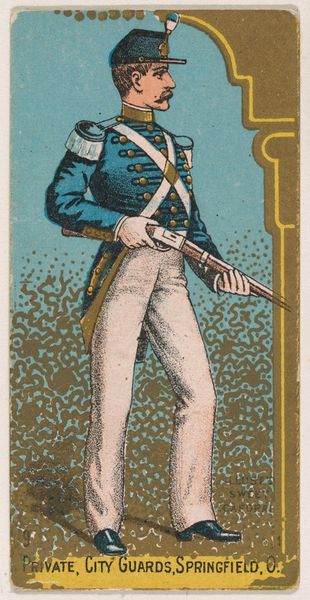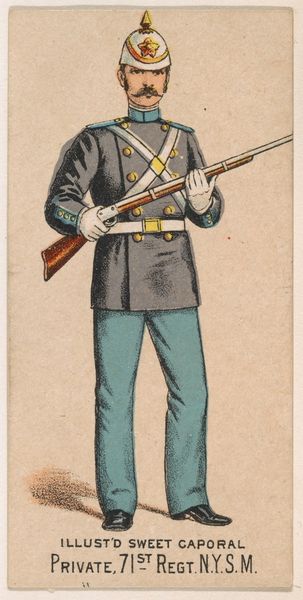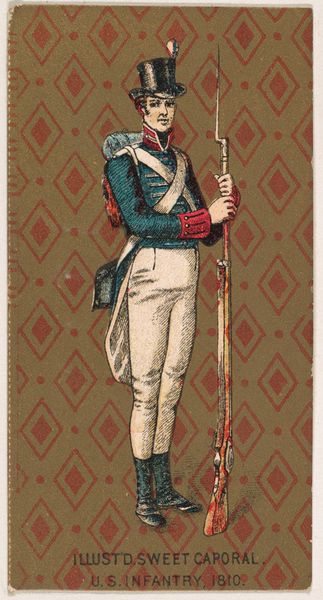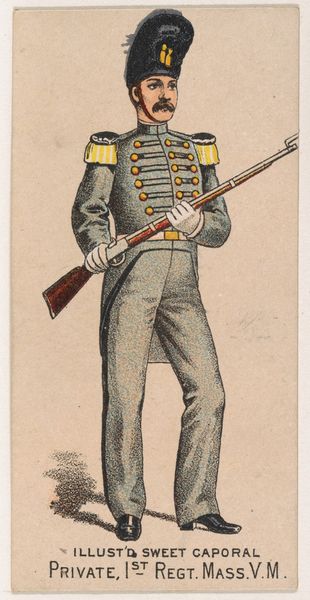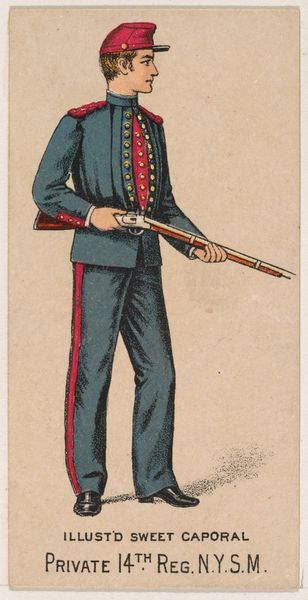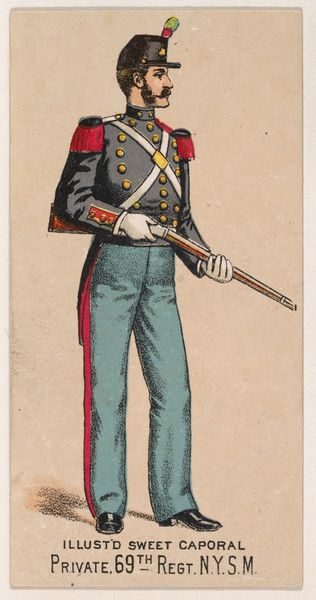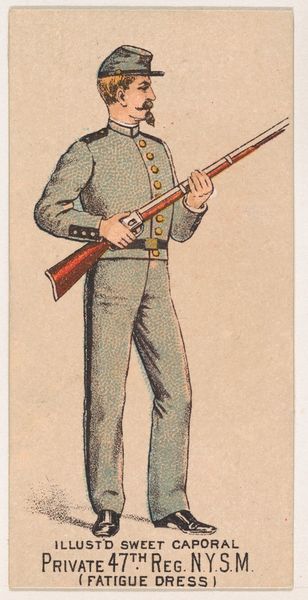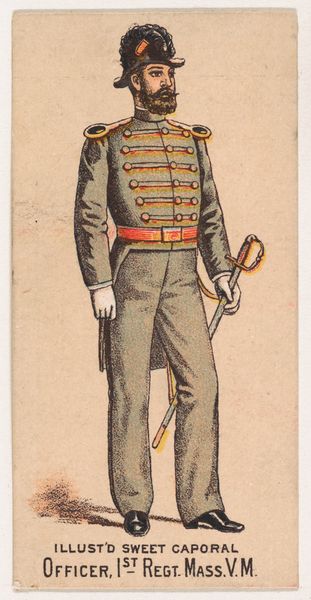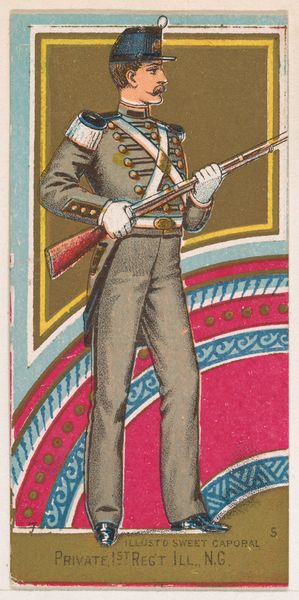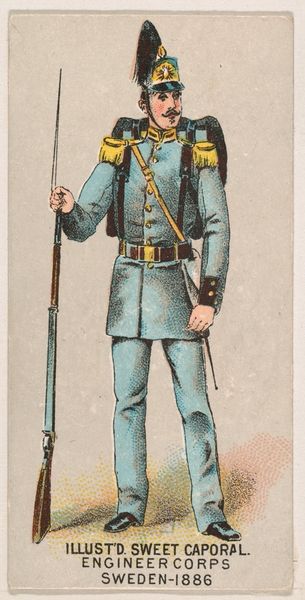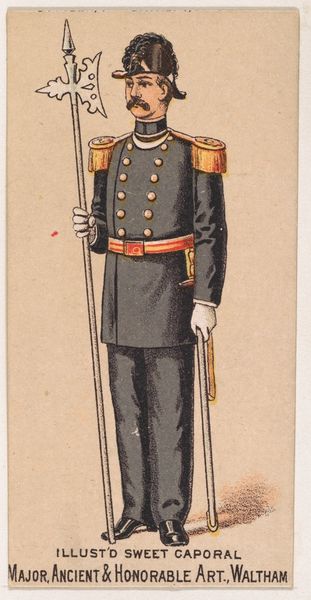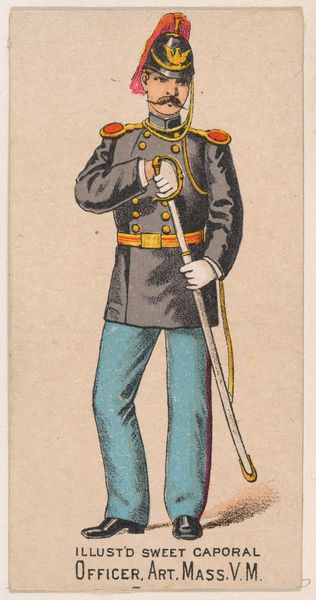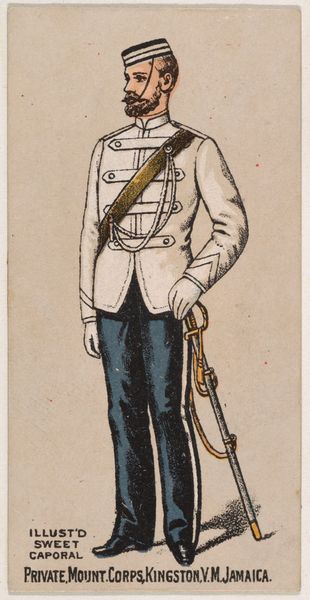
Rifleman, United States Army, 1813, from the Military Series (N224) issued by Kinney Tobacco Company to promote Sweet Caporal Cigarettes 1888
0:00
0:00
drawing, print
#
portrait
#
drawing
# print
#
caricature
#
caricature
#
figuration
#
men
#
genre-painting
#
history-painting
Dimensions: Sheet: 2 3/4 × 1 1/2 in. (7 × 3.8 cm)
Copyright: Public Domain
Curator: Here we have "Rifleman, United States Army, 1813," a print created in 1888 by the Kinney Brothers Tobacco Company. It's part of a military series used to promote Sweet Caporal Cigarettes. Editor: My initial impression is the formal yet humorous style, like a child’s rendering of a heroic painting printed on… what is this, paper? How ephemeral. Curator: Indeed. What interests me is how a historical image is deployed as a marketing tool. We see the romanticized figure of a soldier, seemingly a straightforward patriotic symbol, used to sell a highly addictive product. It begs the question: what exactly is being consumed here? Editor: It’s clever, appealing to masculine identity while also providing an affordable commodity to consume, literally and figuratively. The materiality is fascinating, too. Printed images such as this helped build mass culture by allowing widespread access, but they quickly dissolved, didn’t they? Curator: Precisely. It democratizes the image, taking it from galleries to the masses. Consider the original context of 1813—the War of 1812 was pivotal in defining American identity. Then fast forward to 1888. These nostalgic cards offered a carefully constructed narrative appealing to American identity to push consumerism. Editor: And it would be so cheap, disposable, but at the time, modern—and what of the working conditions of those employed by the Kinney Bros.? Those things affect the reception and perception of an image, certainly. Curator: Of course! We have to understand how images such as this perpetuated certain ideals of masculinity and nationalism, and how tobacco companies, as influential entities, played into and shaped those values. What historical gaps might this omit from consideration? Editor: Absolutely, and examining the image and how it has traveled from inception to reception can reveal societal complexities we might have missed. Curator: It's always fascinating to trace these cultural fingerprints left on everyday items, like these cigarette cards, revealing both overt messages and subtle insinuations. Editor: Yes, and it prompts us to think more critically about production and consumer culture.
Comments
No comments
Be the first to comment and join the conversation on the ultimate creative platform.
